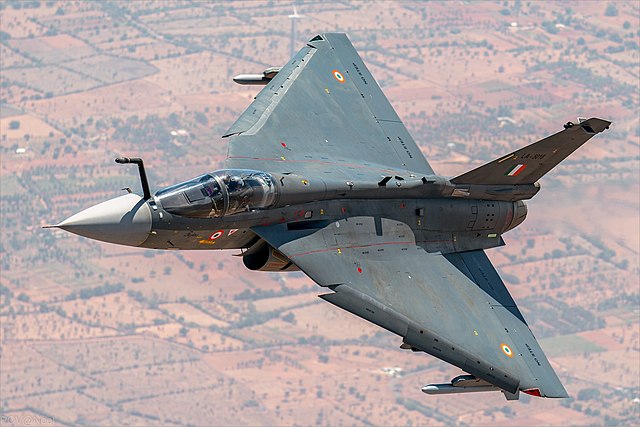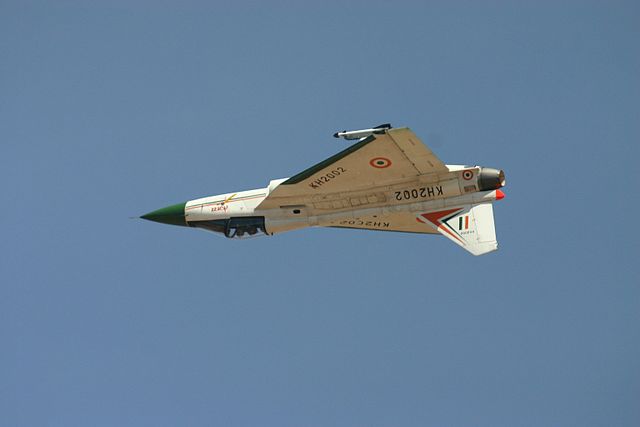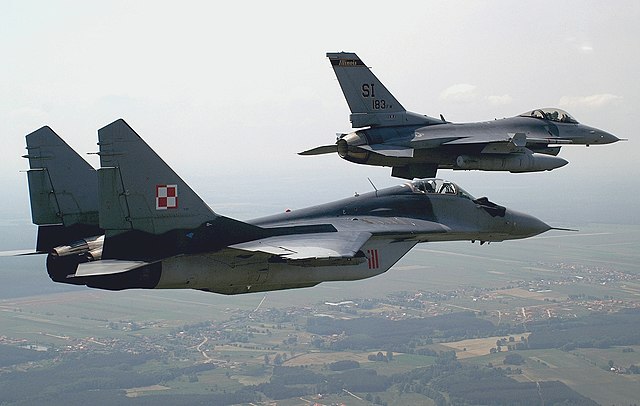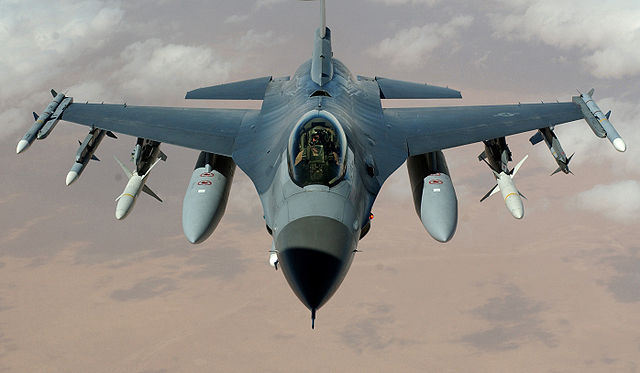The HAL Tejas is an Indian single-engine, 4.5 generation delta wing multirole combat aircraft designed by the Aeronautical Development Agency (ADA) and manufactured by Hindustan Aeronautics Limited (HAL) for the Indian Air Force (IAF) and Indian Navy. Tejas made its first flight in 2001 and entered into service with the IAF in 2015. In 2003, the aircraft was officially named "Tejas". Currently Tejas is the smallest and lightest in its class of supersonic combat aircraft.
HAL Tejas
LCA Tejas production partners
Tejas technology demonstrator in inverted flight
Tejas Limited Series Production aircraft LSP-3 on landing run
Fourth-generation fighter
The fourth-generation fighter is a class of jet fighters in service from around 1980 to the present, and represents design concepts of the 1970s. Fourth-generation designs are heavily influenced by lessons learned from the previous generation of combat aircraft. Third-generation fighters were often designed primarily as interceptors, being built around speed and air-to-air missiles. While exceptionally fast in a straight line, many third-generation fighters severely lacked in maneuverability, as doctrine held that traditional dogfighting would be impossible at supersonic speeds. In practice, air-to-air missiles of the time, despite being responsible for the vast majority of air-to-air victories, were relatively unreliable, and combat would quickly become subsonic and close-range. This would leave third-generation fighters vulnerable and ill-equipped, renewing an interest in manoeuvrability for the fourth generation of fighters. Meanwhile, the growing costs of military aircraft in general and the demonstrated success of aircraft such as the McDonnell Douglas F-4 Phantom II gave rise to the popularity of multirole combat aircraft in parallel with the advances marking the so-called fourth generation.

Fourth-generation fighter
A Polish Air Force Mikoyan MiG-29 with a USAF F-16 Fighting Falcon
A USAF F-16 on a mission near Iraq in 2003
The F/A-18 inverted above an F-14 shown here is an example of fly-by-wire control.








